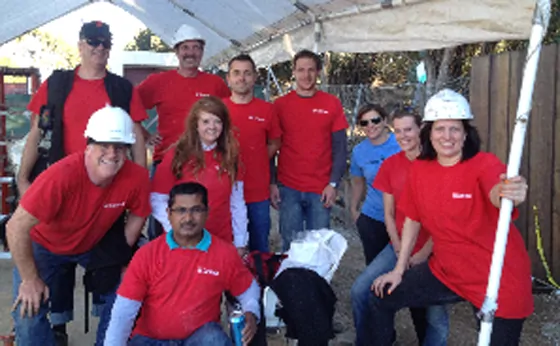Your Genesys Blog Subscription has been confirmed!
Please add genesys@email.genesys.com to your safe sender list to ensure you receive the weekly blog notifications.
Subscribe to our free newsletter and get blog updates in your inbox
Don't Show This Again.

Mahatma Gandhi said, “The best way to find yourself is to lose yourself in the service of others.”
What does customer service mean to you? What about employee engagement? And how does that impact the customer experience, exactly?
My professional life revolves around discussions about customer experiences and how to make them better. But when I think about it, my personal life does as well—the only variable is who my “customer” is:
At work: Our business at Genesys is all about enabling exceptional customer experiences through positive employee engagement, effective customer engagement and more efficient business processes. Our direct customers are other businesses that want to improve their processes and strategies. We help them create the kind of experiences that keep their customers (and employees) happy.
At home: Our “customers” are a little different. They include our families, our friends, our neighbors, the soccer team, the PTA, and even our pets—but isn’t the philosophy the same? We’re trying to provide (and also receive) the most positive experiences we can, given whatever resources we have.
Our customers vary quite a bit, of course, but for better or for worse, as players in life and employees in business, the experiences we give and receive in every avenue of our lives are what shape us.
Recently I was reminded of this in a very simple but powerful way. Through the Genesys Make-a-Difference program, I had the opportunity to participate in a Habitat for Humanity day with a team of Genesys employees in the Bay Area. We all showed up bright, early, and bleary-eyed, clutching our coffees and hoping to make a small difference working with this amazing group of humanitarians.
Consider these numbers:
28: The number of single-family homes being built at Habitat Terrace, which is Habitat Greater San Francisco’s largest development currently in construction.
85: The percent of construction done by volunteers. That’s a lot of volunteers, which means a lot of effort spent in managing the workforce.
I expected to work hard, measure some boards, hammer some nails. What I didn’t expect was that it would help me remember the basics of employee engagement. “We the volunteers” were the “employees” in this instance.
Here are some parallels I found myself drawing between the world of contact centers and workforce planning and customer experience:
Sometimes in our daily grind, especially in a fast-paced, dynamic contact center or customer service environment, we forget to stop and remember what our most important resource actually is: our people. Just like in the contact center, Habitat for Humanity runs a tight ship to make sure the work gets done, and one of their most effective techniques is employee engagement.
We can all learn a lot from getting back to basics. Making sure employees are engaged and empowered to drive truly exceptional customer experiences goes a long way. And, when combined with your business processes aligning with your goals and strategies, this keeps customers coming back. The employees at Habitat for Humanity are driven by their passion for helping others.
Happy employees and happy customers equal great business outcomes. In our world of high-tech omnichannel customer engagement, it’s worthwhile to remember this fundamental equation.
Subscribe to our free newsletter and get blog updates in your inbox.